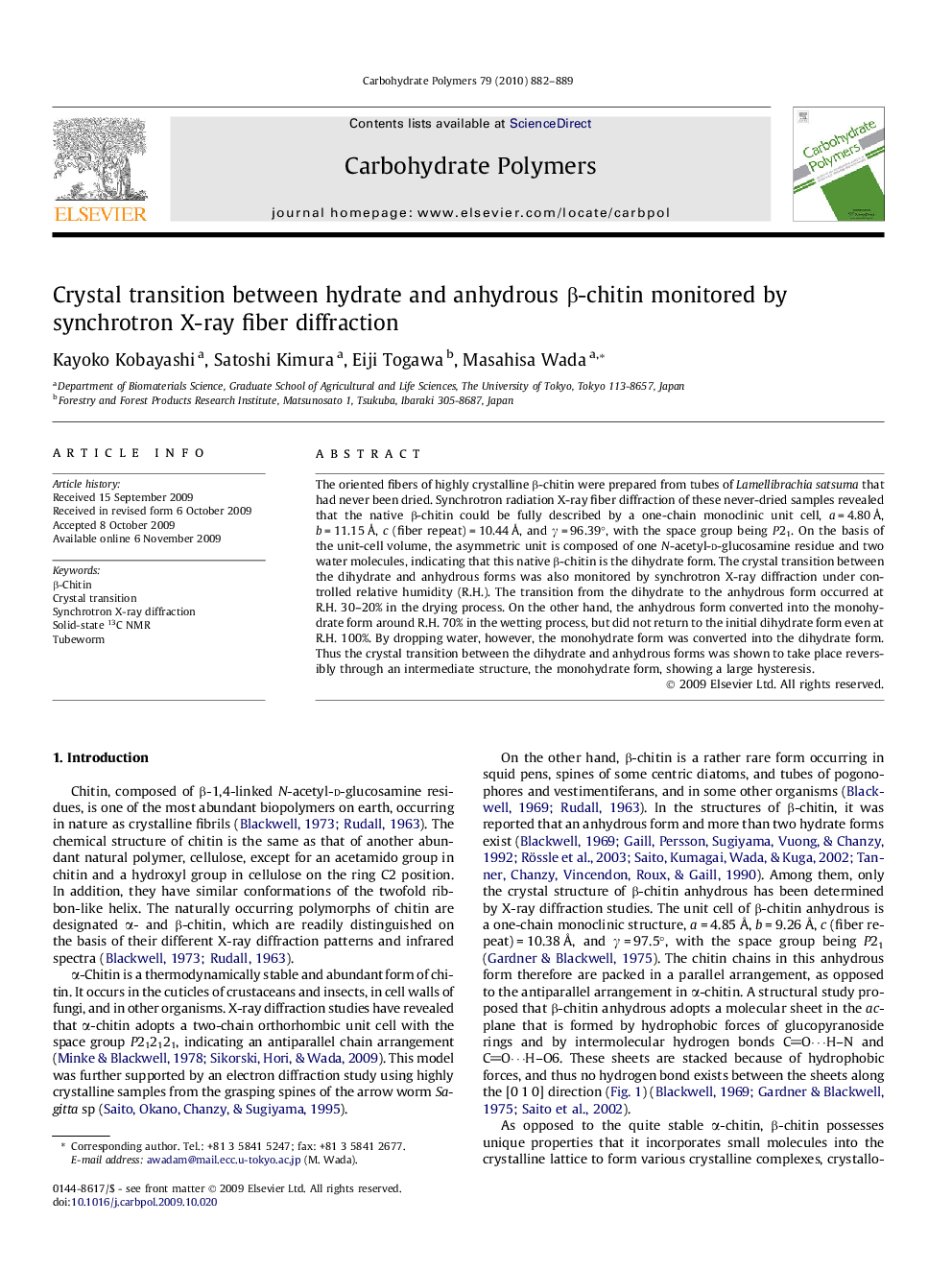| Article ID | Journal | Published Year | Pages | File Type |
|---|---|---|---|---|
| 1387281 | Carbohydrate Polymers | 2010 | 8 Pages |
The oriented fibers of highly crystalline β-chitin were prepared from tubes of Lamellibrachia satsuma that had never been dried. Synchrotron radiation X-ray fiber diffraction of these never-dried samples revealed that the native β-chitin could be fully described by a one-chain monoclinic unit cell, a = 4.80 Å, b = 11.15 Å, c (fiber repeat) = 10.44 Å, and γ = 96.39°, with the space group being P21. On the basis of the unit-cell volume, the asymmetric unit is composed of one N-acetyl-d-glucosamine residue and two water molecules, indicating that this native β-chitin is the dihydrate form. The crystal transition between the dihydrate and anhydrous forms was also monitored by synchrotron X-ray diffraction under controlled relative humidity (R.H.). The transition from the dihydrate to the anhydrous form occurred at R.H. 30–20% in the drying process. On the other hand, the anhydrous form converted into the monohydrate form around R.H. 70% in the wetting process, but did not return to the initial dihydrate form even at R.H. 100%. By dropping water, however, the monohydrate form was converted into the dihydrate form. Thus the crystal transition between the dihydrate and anhydrous forms was shown to take place reversibly through an intermediate structure, the monohydrate form, showing a large hysteresis.
